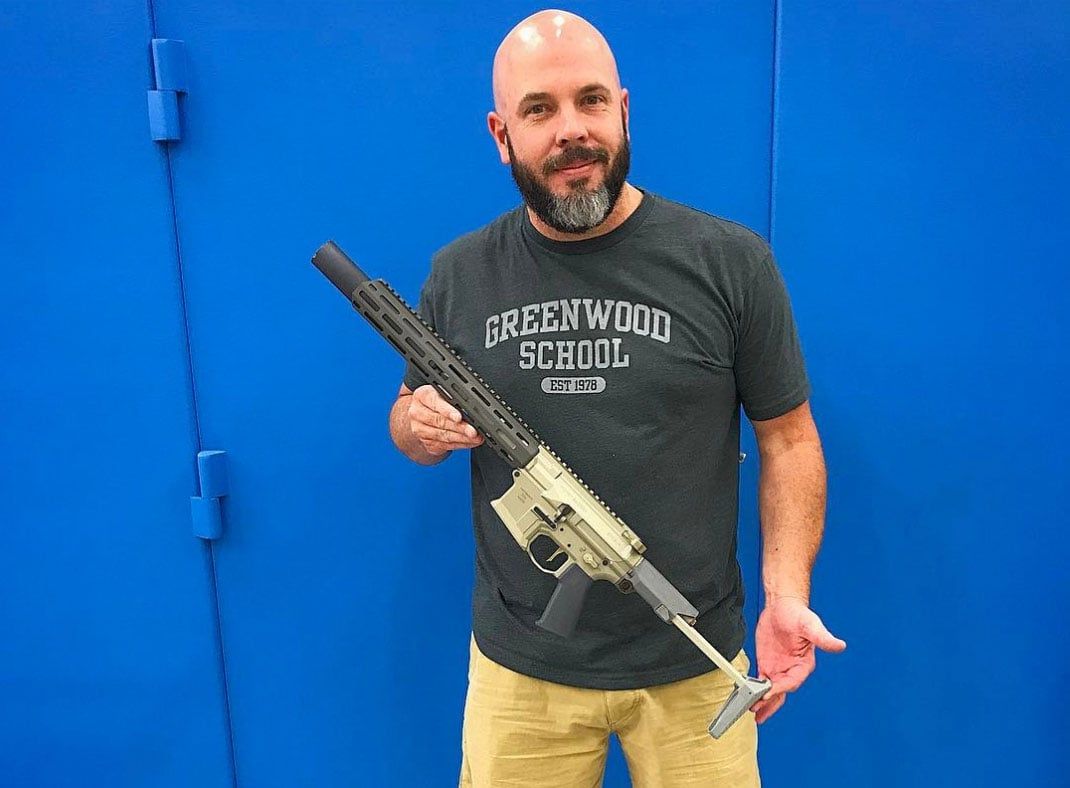
ARBuildJunkie recently sat down with Q CEO Kevin Brittingham, one of the industry’s preeminent trendsetters. His influence is everywhere. The reason you see silencers taking off as they have is because of Kevin Brittingham…The reason you’re debating a build in .300 Blackout? That’s Kevin Brittingham. Someone recently described him as mix of Eugene Stoner, Reed Knight, Gaston Glock and Elon Musk.
Bottom line, if you want a view on where the industry is going, you’re going to want to take a hard look at what Q is bringing to market. Few men are taking bolder steps to bring their visions and passions to life…and few if any, are making firearms and accessories this daring and future-forward. If you need proof….simply find one of his products and hold it for 2 minutes.
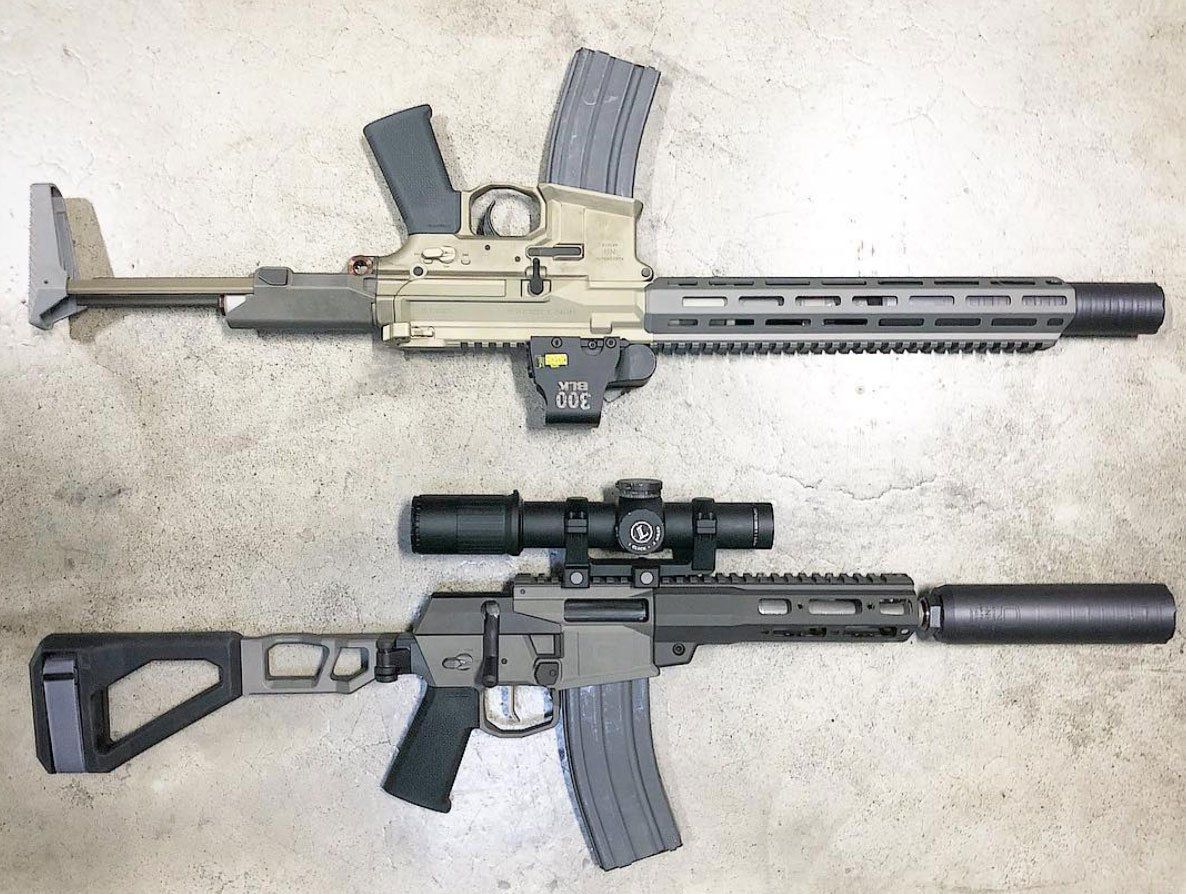
Q: Kevin, can you talk about your first experiences with the AR-15 platform?
Kevin Brittingham: My introduction to the AR-15 was when I was in high school. It was my third gun and I fell in love once I started shooting it. I got hooked up with Max
Q: What’s your impression of the AR’s evolution in the years since you first got involved with the AR-15?
Kevin Brittingham: It’s interesting. when I was in college and I would go to the local gun range there would be 20 people shooting and no one had an AR-15. People would look at me funny for having one. In the years
I wish that Eugene Stoner was still alive to see that it withstood the test of time…especially now where it’s more prolific than it was when he died in the 90’s. It has also become widely accepted as one of the most common hunting rifles now. It’s a great for children. It’s just such a practical gun and nobody has been able to make a gun that is better, more accurate, smaller, or lighter weight…the things that you would think of in a product’s evolution. It just goes to show just how far ahead Stoner was, and how it has taken the rest of us 30-40 years to catch up and really understand just what he had done.
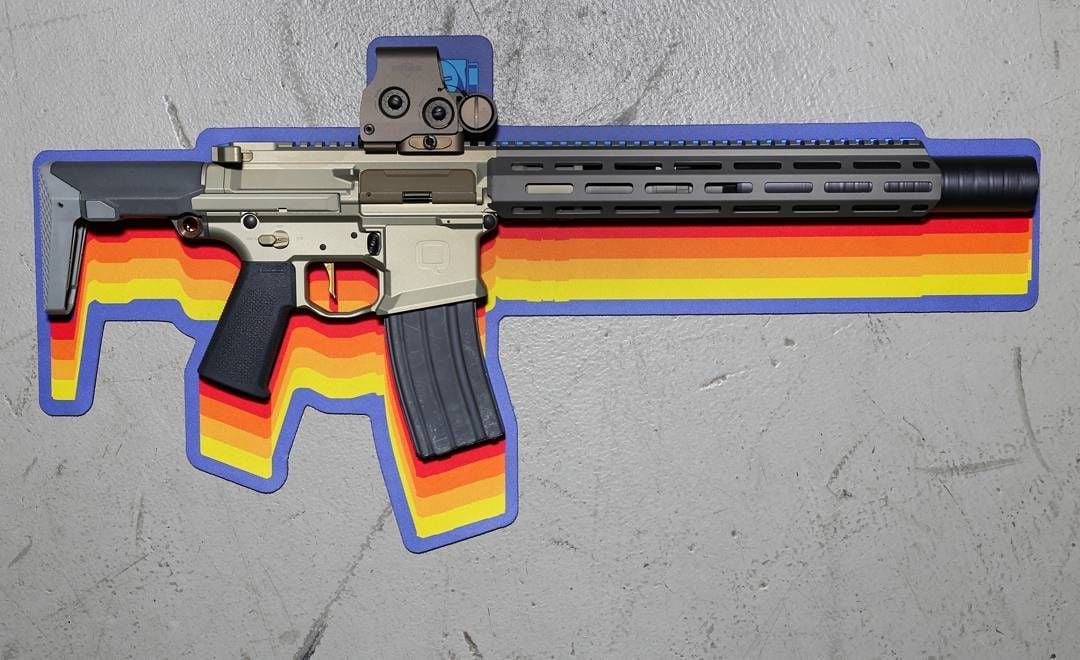
Improvements and Gimmicks
Kevin Brittingham: Our Honey Badger is an AR-15…so I love the platform. It’s my favorite platform overall and the trends that have come along are very interesting. We’ve seen different calibers, like when we developed 300 Blackout. There’s been a trend towards silencers and shorter barrels which I think correlates with the 300 Blackout.
Then we’ve seen the trend of optics, red-dots, things like that. It’s also great to see a lot of good quality triggers for the gun that
Now, the trend of skeletonizing the AR to make it super lightweight, I think is just a gimmicky trend that will go the way of Affliction t-shirts and things like that, but I guess we’ll see.
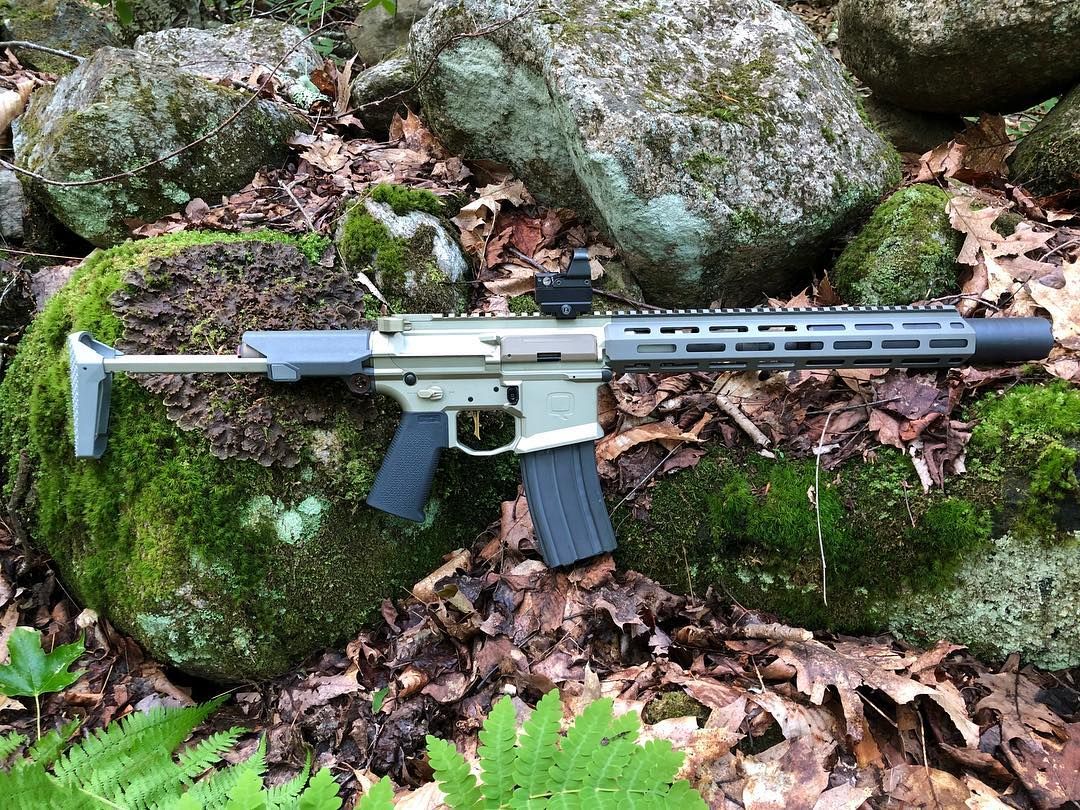
Q: You mention the Honey Badger. I’m around a lot of guns. But the Honey Badger has become my go-to firearm…and it’s not because of any cool name or hype attached. I know a few folks that use the rifle professionally, and they too, swear by it. Can you give readers a bit of background on what exactly the Honey Badger is?
Kevin Brittingham:The Honey Badger is a highly modified AR. It’s super lightweight because we designed and built every part with the exception of the bolt carrier and the trigger.
Everything else we started from scratch. So, we were able to take weight out responsibly across the whole gun, not just skeletonizing certain parts or using expensive materials. A lot of engineering went into it, especially the operating system of the gun.
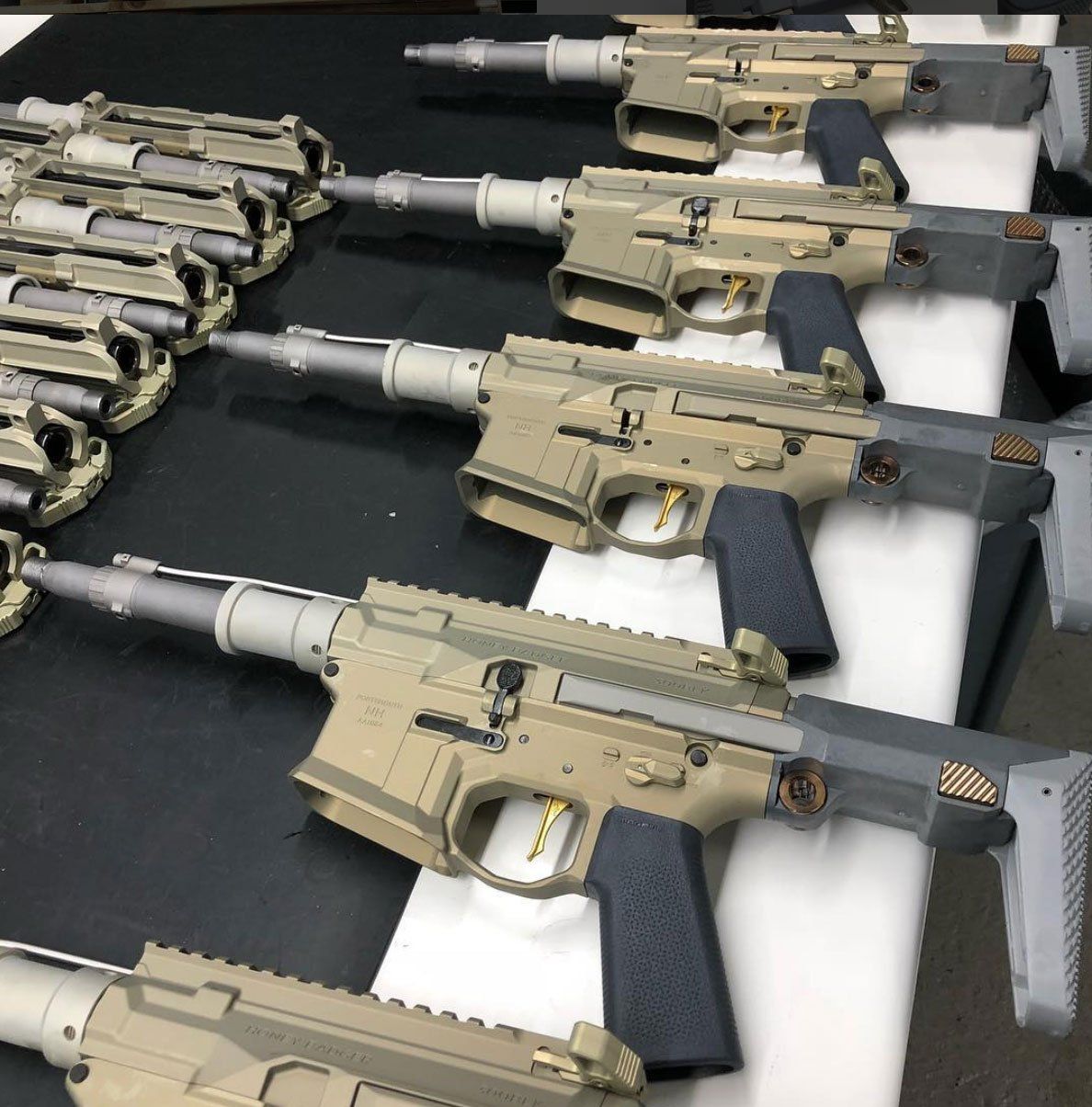
The end result is I would say the Honey Badger is the best value in an AR-15, although it’s relatively expensive compared to some things like the Springfield Saint or some of the stuff where
Practical Uses of the Honey Badger
The Honey Badger is a small production. We control it all. It’s very high quality, a ton of engineering and QC has gone into it, but it was built for a special operations group to replace the MP5SD, a submachine gun. While it was built for the military, it has turned out to be a very, very practical gun for law enforcement, for home defense, for pig hunting, deer hunting.
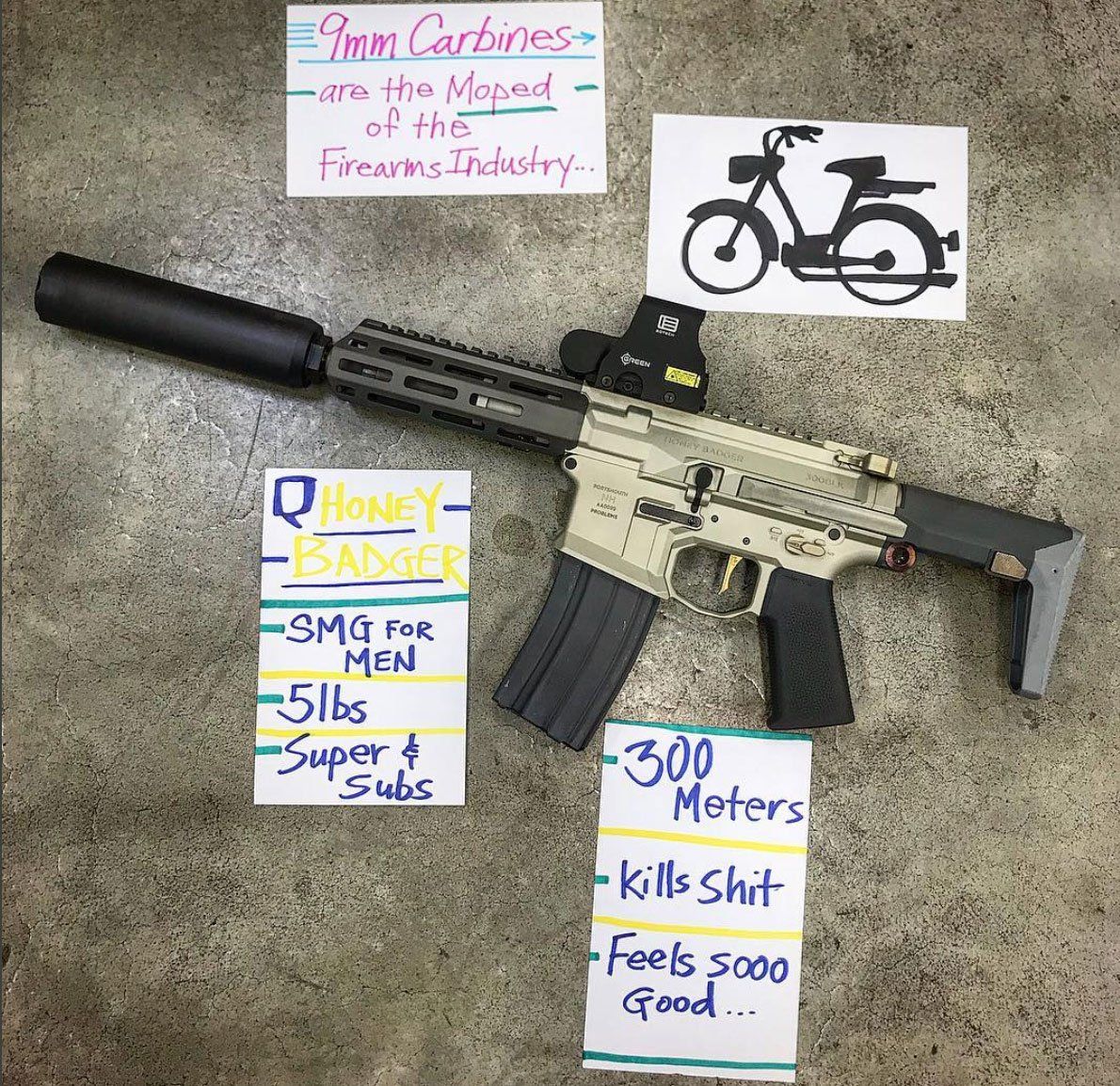
It’s something that’s very enjoyable to shoot. My children, their favorite gun was the MP5SD, now it’s the Honey Badger. As far as comparison, the Honey Badger is less weight than even the MP5.
You get a far superior trigger, better ergonomics, its quieter…you get super and subsonic ammo so you can hunt with it, you get really good terminally performing ammunition…with the support of all the major ammo companies, so that’s pretty exciting. Unlike a lot of the alternative calibers for AR-15s, with 300 Blackout you get full magazine capacity. You don’t have to change the bolt, it’s just a simple barrel change.
Q: As most know, you’re the reason there is 300 Blackout. With a bit of perspective, can share what that journey with the cartridge was like, and how you feel about the round as it exists today?
Kevin Brittingham:300 Blackout was a commercialized wildcat cartridge that was known as 300 Whisper by J.D. Jones. He wasn’t really that interested in commercializing it. The US Navy Special Warfare Group approached us shortly after Remington had purchased Advanced Armament from me. They wanted to know if we were interested in working on a project for them. They had purchased a number of guns from J.D. Jones because they wanted the power of the AK-47, a 30-caliber bullet, through an M4 but they also wanted it to have subsonic capability.
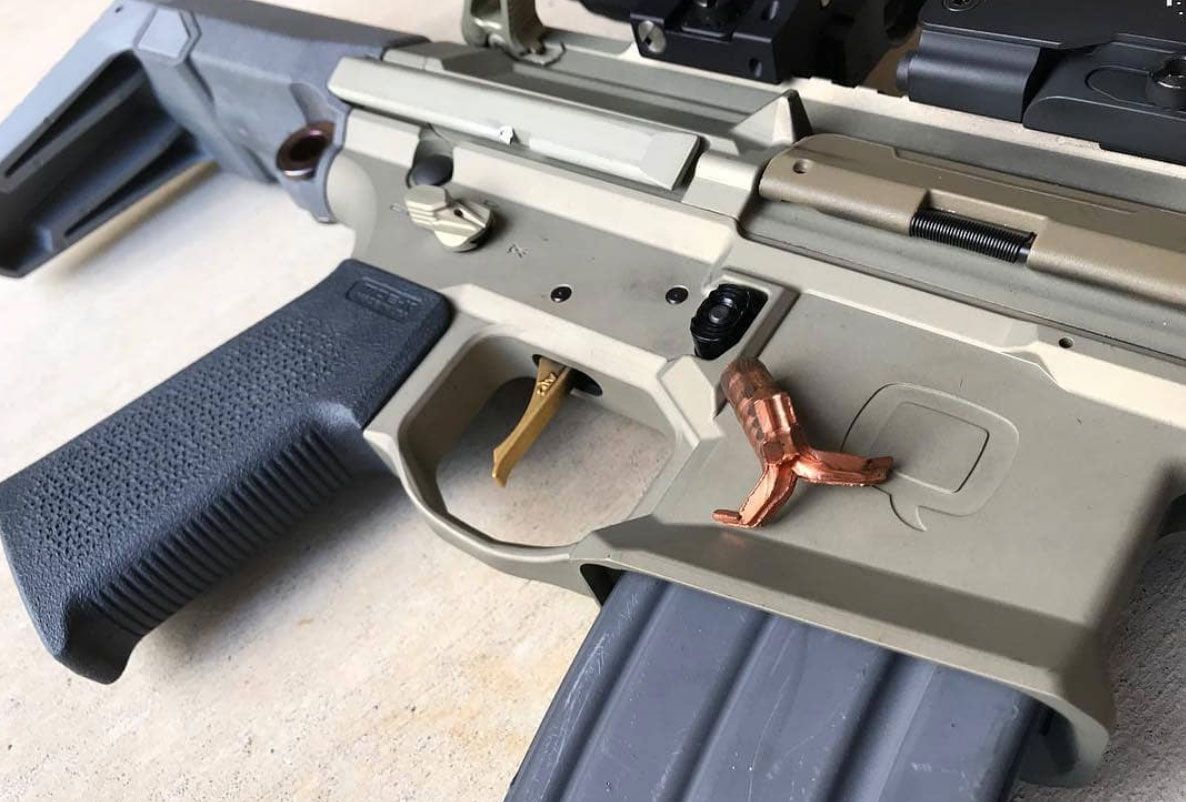
300 Whisper was the correct path for them to try to go down. The problem was the guns didn’t operate reliably and also J.D. was hamstrung by using the traditional 30 caliber bullets that were available. They were widespread, and there’s a ton of them and that’s great…but the problem was they don’t feed reliably in an AR-15. They are either too short so they don’t take up the full magazine, or the ogive isn’t correct to feed from the magazine into the barrel using the traditional barrel extension feed ramps.
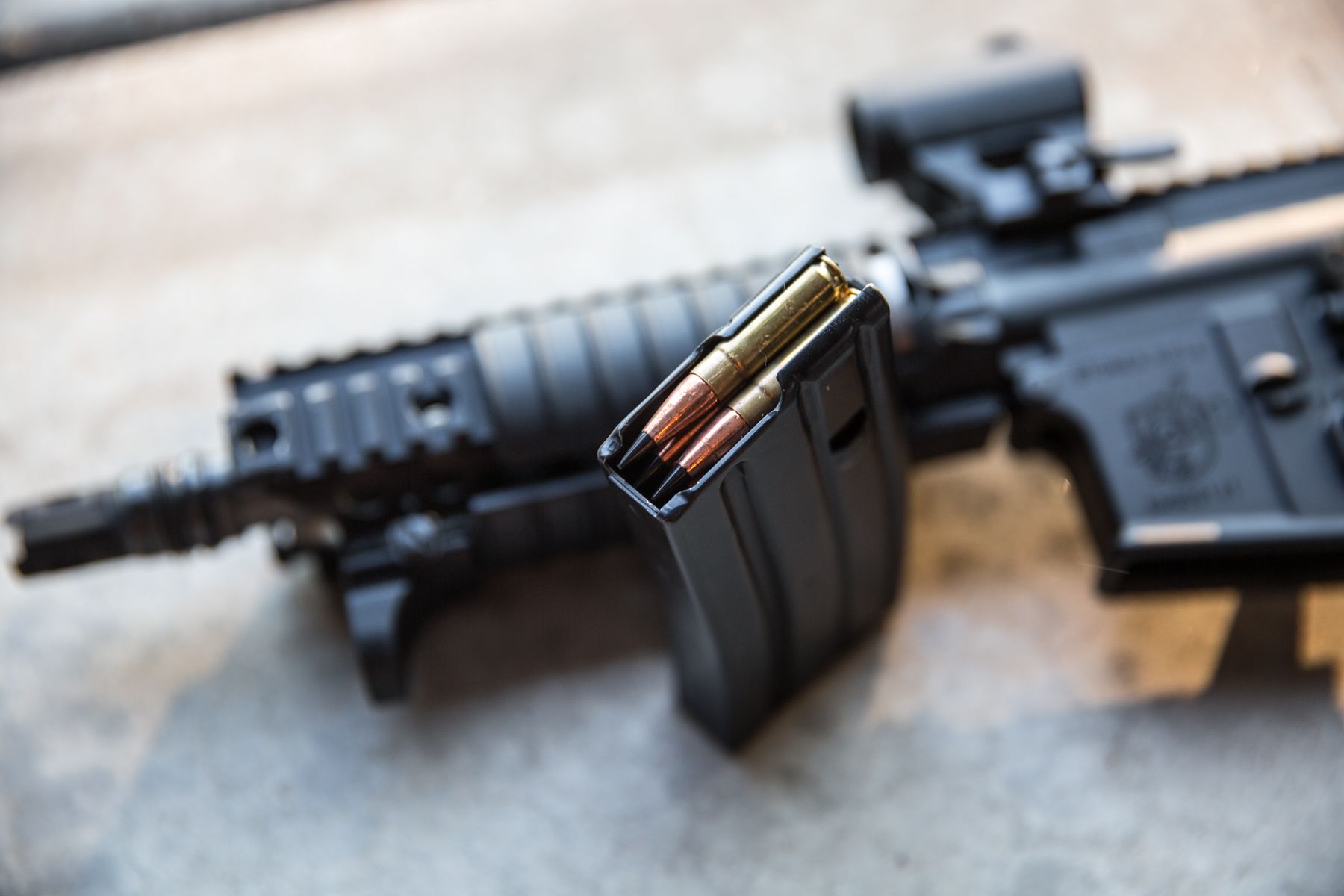
Bringing 300 Blackout to Market
So we designed proper projectiles that were long, with the right shape so they’d feed. And we worked up all the loads for the subsonic and came up with optimum twist for it…and it was rejected.
Remington, which is not known for being trendsetters, they thought it was a stupid idea and they refused to make the ammo for it unless we had a military contract. So, we got a military contract from hand loads and because Hornady was onboard. Then, once we got the military contract, Remington got on board.
Hornady is a wonderful, progressive company that has done things like 6.5 Creedmoor that have been commercially successful, so they are a little bit more ahead of the curve than the other big ammo companies so it seems. You see them now influencing the market, with Federal stepping up and doing 224 Valkyrie, so that’s neat to see.
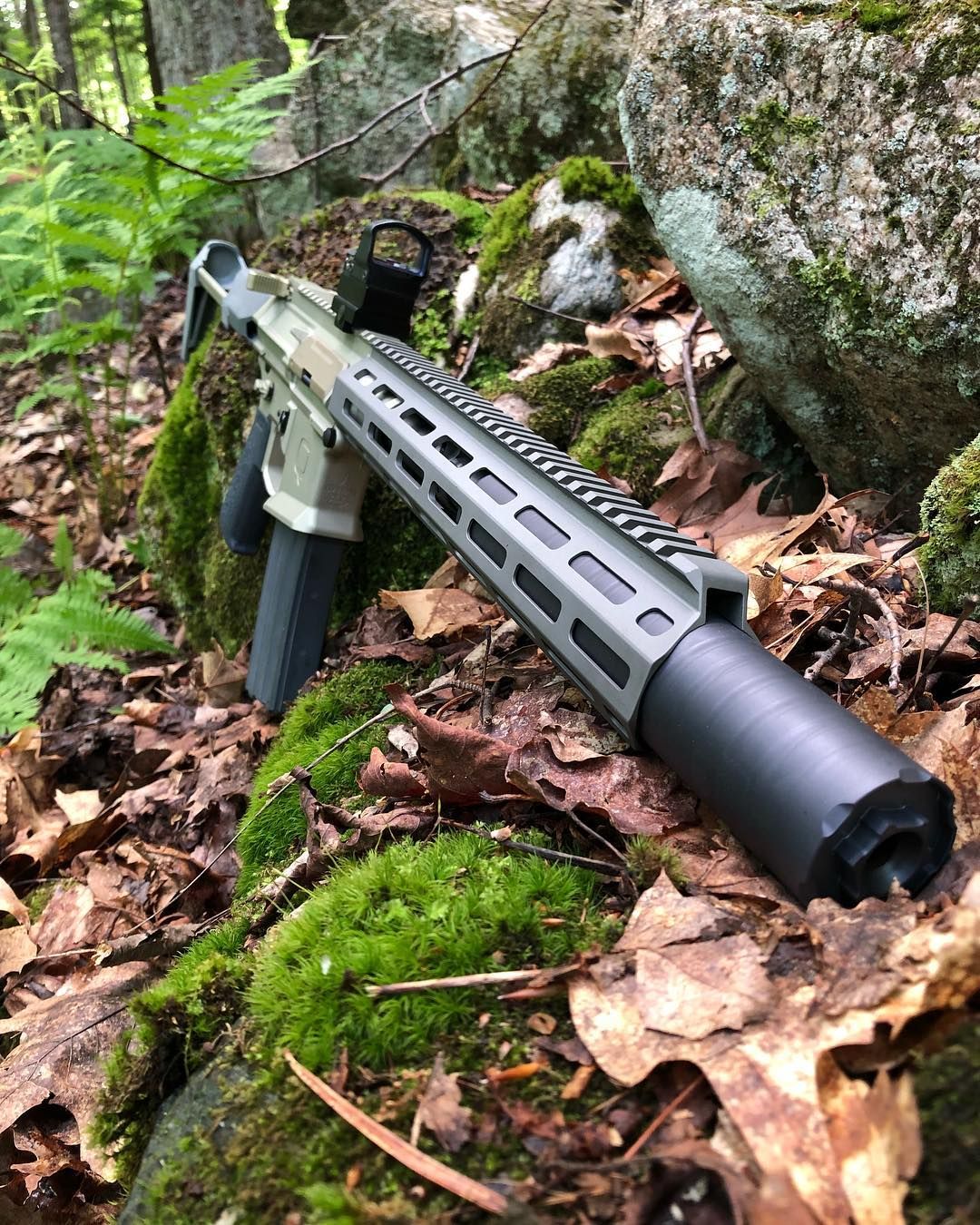
So, the program has really taken off and has now been adopted by the military…both the 300 Blackout and the Honey Badger. But, some good and some bad things happened with that. When the ammo was selected, that basically freezes development and what’s going to be delivered.
Q: What sort of things would more development have done? Were there areas where things could be different or improved?
Kevin Brittingham: For instance, barrel twist. We started at 1/8 twist for 300 Blackout. We’ve ended up at 1/5. You’re spinning it faster with the subsonic. With a slow long bullet, it helps with accuracy. And with a faster twist, you also get more rotational energy. Now, 1/4 would be even more accurate with subsonic, but the bullets that were selected…they would open up out of the muzzle. So we learned a lot from that and since then we’ve seen the ammo really progress. We’ve got companies now like Discreet Ballistics that are making solid copper subsonic expanding…and that is wonderful for hunting.
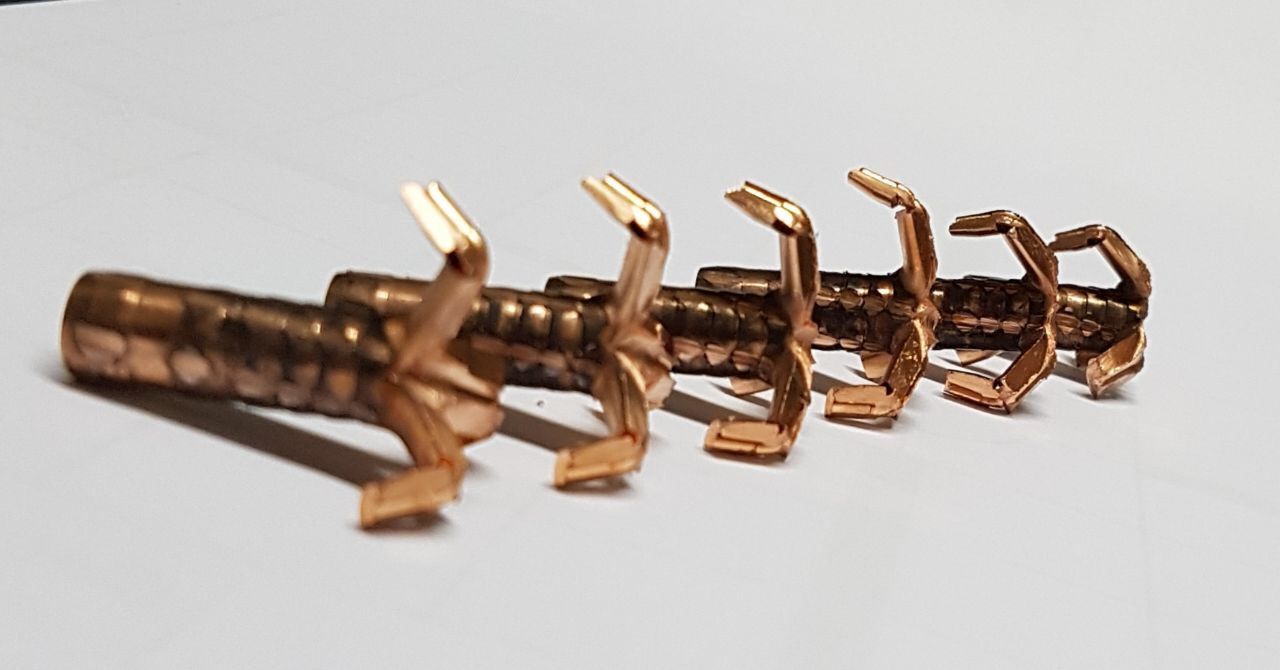
Q: I have a family member who does professional deer eradication with Discreet Ballistics 300 Blackout out of a Honey Badger. It’s quite effective. But his other go-to firearm is your Fix in .308. We’ve spoken with Dave Stark over at Discreet Ballistics and the thing he’s very excited about is the 8.6 you’re developing. I know he’s working on an 8.6 subsonic…Can we get some information on where that stands?
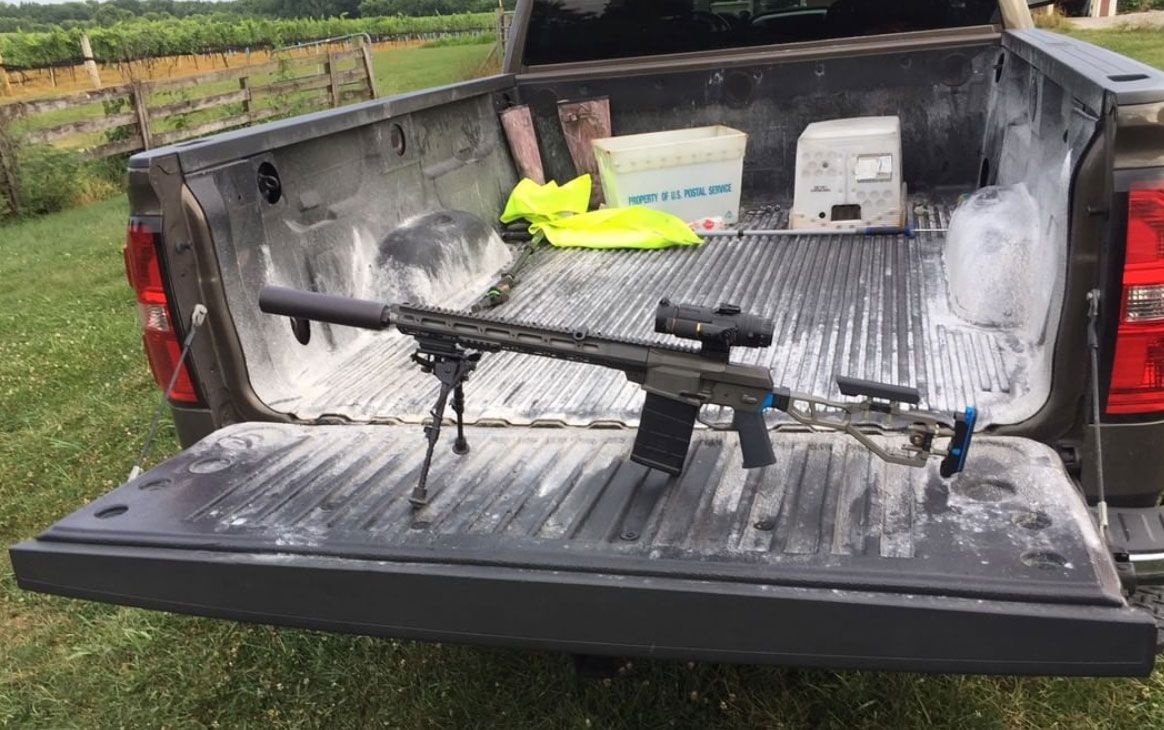
Kevin Brittingham: 300 Blackout is great for pigs, whitetail deer
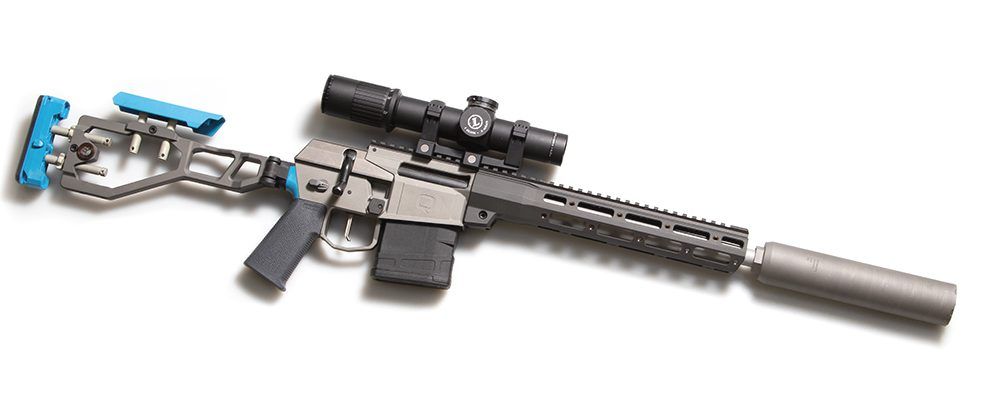
Just like 300 Blackout, it is designed for fast-twist, short barrels. 1/2, 1/3 twist. We’re hoping this is going to be the first 100-yard, sub-MOA subsonic…
8.6 Blackout as the Next-Level
I really think it’s going to be the next evolution of today’s trends…shooting suppressed, low signature, short barrels. With it designed for 12.5” barrels, for the supersonic ammo, you are going to get more energy out of 12.5” than you would from a 16 to 20” .308…and you’re going to spin it fast. The fast spinning doesn’t hurt the supersonic, and it only helps the subsonic. And rotational energy gives you more energy on target as well.
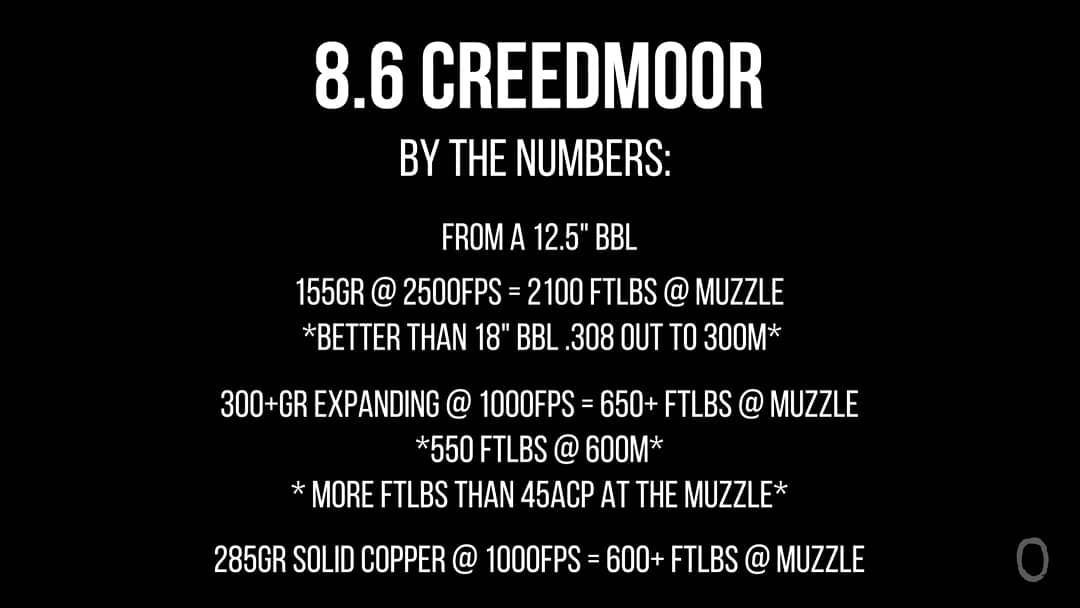
The subsonic ammo is going to sound like a silenced .22, just like 300 Blackout. We’re really excited about it. It works just like 300 Blackout with just a barrel change from .308. It has the same subsonic and supersonic cycling in gas guns as well as in bolt-action rifles.
Q: Speaking of bolt action rifles…your Fix feels like you’re holding the future in your hands. Can you talk about the innovation and engineering behind that rifle?
Kevin Brittingham:I think we’re more of an
AR Influence on a Bolt Gun
The AR had a huge influence on the Fix. The AR, there is no argument…ergonomically it is the best rifle ever produced. We wanted to carry that over into bolt actions. We saw a gap in innovation in bolt actions. Mauser was really about the last innovation it seems other than accessories like the chassis and things of that nature. But we wanted to bring the AR ergonomics to the bolt gun and modernize it.
I think it’s the most innovative gun, to me, probably since the Glock. And I think it’s going to replace the Remington 700 as the practical, go-to standard bolt gun for the next generation of shooters.
Kevin Brittingham
Whether you are in a state that does not allow AR-15s, or you like to travel internationally and hunt, or you’re just a fan of bolt guns, how can we make it shoot as good, feel as good and be as practical as an AR-15? Ethan Lessard and I have been discussing this for ten years, and the Fix is the result. The passion…the things we’ve learned over the last ten years…our core group of designers getting better and bigger and smarter. It’s a little different than a lot of gun companies. All of our guys work on every project together…so the Fix had six people involved in it and I think it’s the most innovative gun, to me, probably since the Glock. And I think
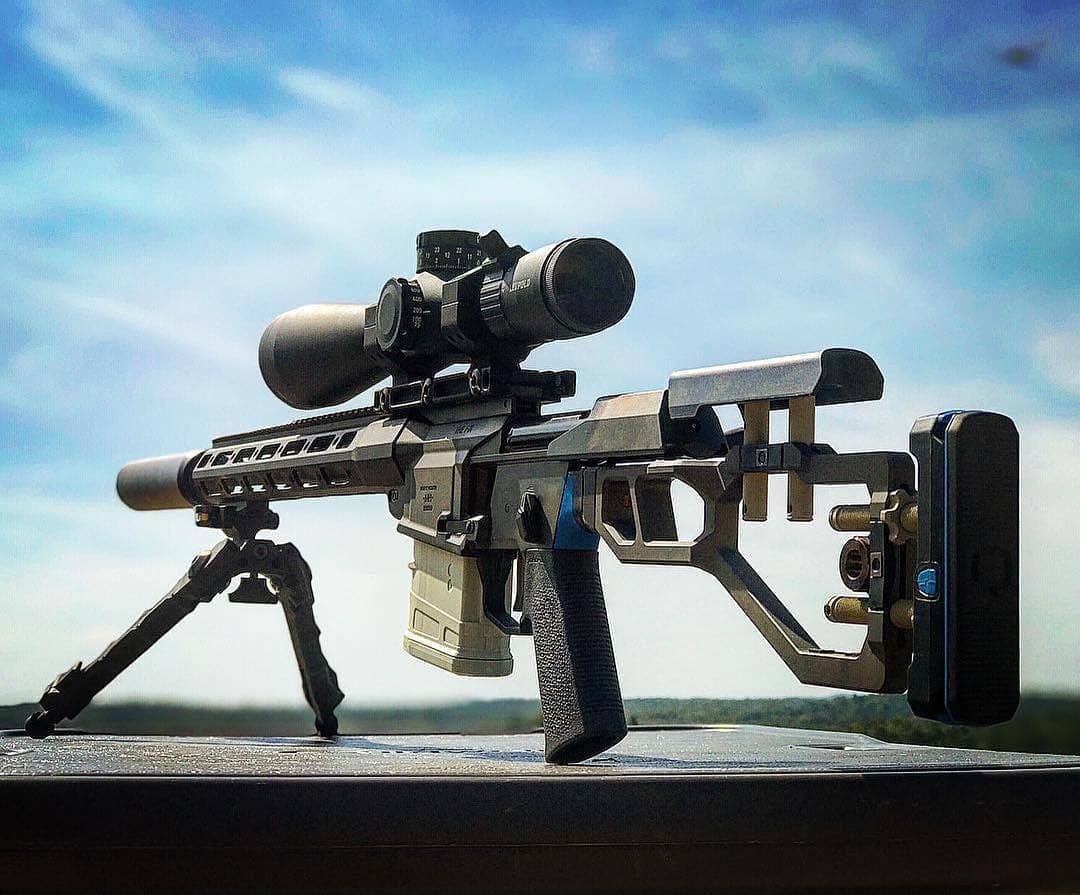
Q’s Production Precision Fix
The Fix is the first production precision gun where it doesn’t have to be hand-fitted. It’s like someone hand-building you a 1911, compared to a Glock or a Sig 226. You also get a folding stock and you get light weight. If you just look at the Accuracy International chassis, the AX chassis weighs the same as our entire Fix in .308. It shows you where the future is going. There’s no reason to be heavy with stuff.
Q: My first intro to you was via Robert Silver’s Silencertalk forum where I learned to really appreciate not only 300 Blackout, but also suppressors like the AAC 762-SDN-6. Can you talk about the suppressors that you and your team have since put together at Q?
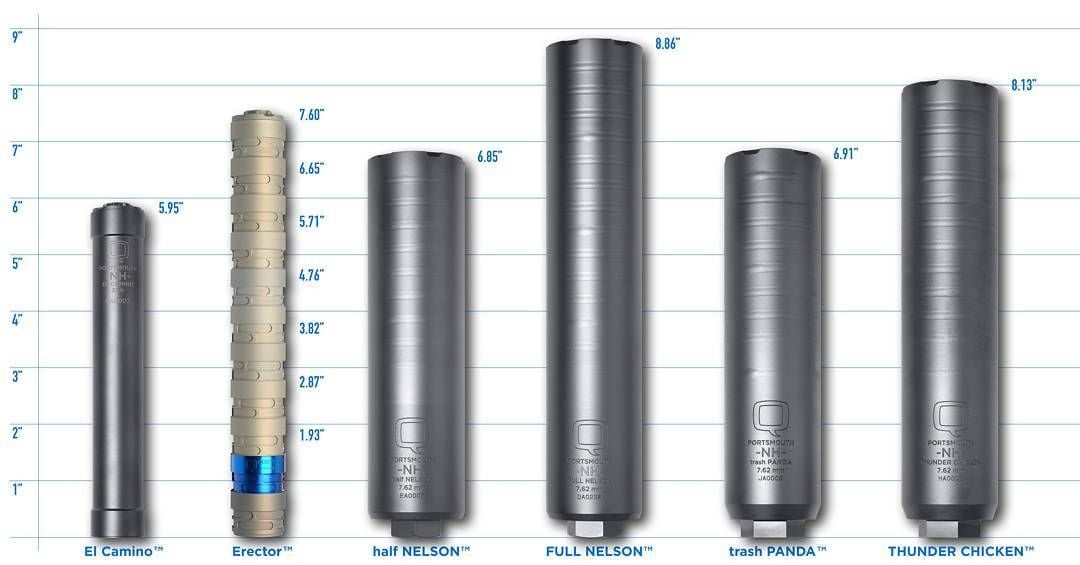
Kevin Brittingham: It’s experience and evolution. I’ve committed my life
Full-Auto Rated Overrated?
The Knights Armament NT4 was the first super rugged silencer. So, we went after that. We built the first commercial full-auto rated silencers and won all of the military contracts. And today I just see everybody copying everything we did at AAC. That’s building very heavy, durable cans that are full-auto rated. Well, what the hell does that even mean?
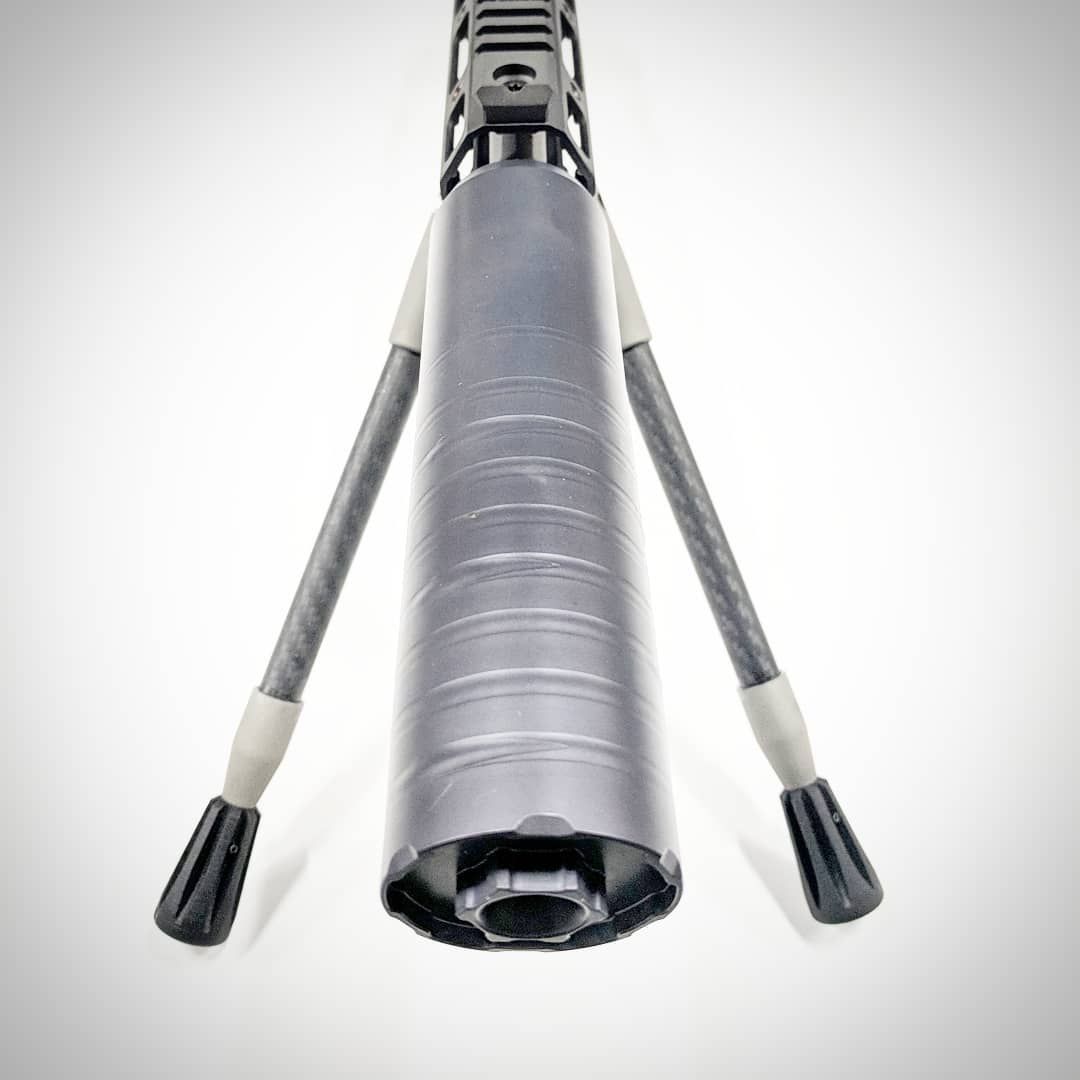
I can blow up any can any day of the week, no matter how it’s built. That said, I’m not going out there and shooting a thousand rounds of full auto in a day so what do I give a shit if it’s full-auto rated? It’s just not a practical thing, and I think Q is very practical, whether it’s the Honey Badger, the Fix, or our silencers. So what we do at Q is build very practical silencers. The quietest..the least back pressure…the most accurate…the best mounting system.
Kevin Brittingham on Practical vs. Cool Factor
I don’t like quick detach. I think it’s dumb…but a lot of people like it. Its just like, I would love to have quick-change barrels on the Fix rifle. Now, you can currently swap the barrel on the Fix and change calibers in two minutes on the tailgate of your truck, without a vice. That’s practical.
But if I decided to make it quick-change, where you press a button and its “cool” like a Jason Bourne movie…well, that would add two pounds to the gun. We’d lose accuracy. All of these things that are really important to me…all for the sake of being “cool.” That’s not what we’re about. QD mounts are the same way.
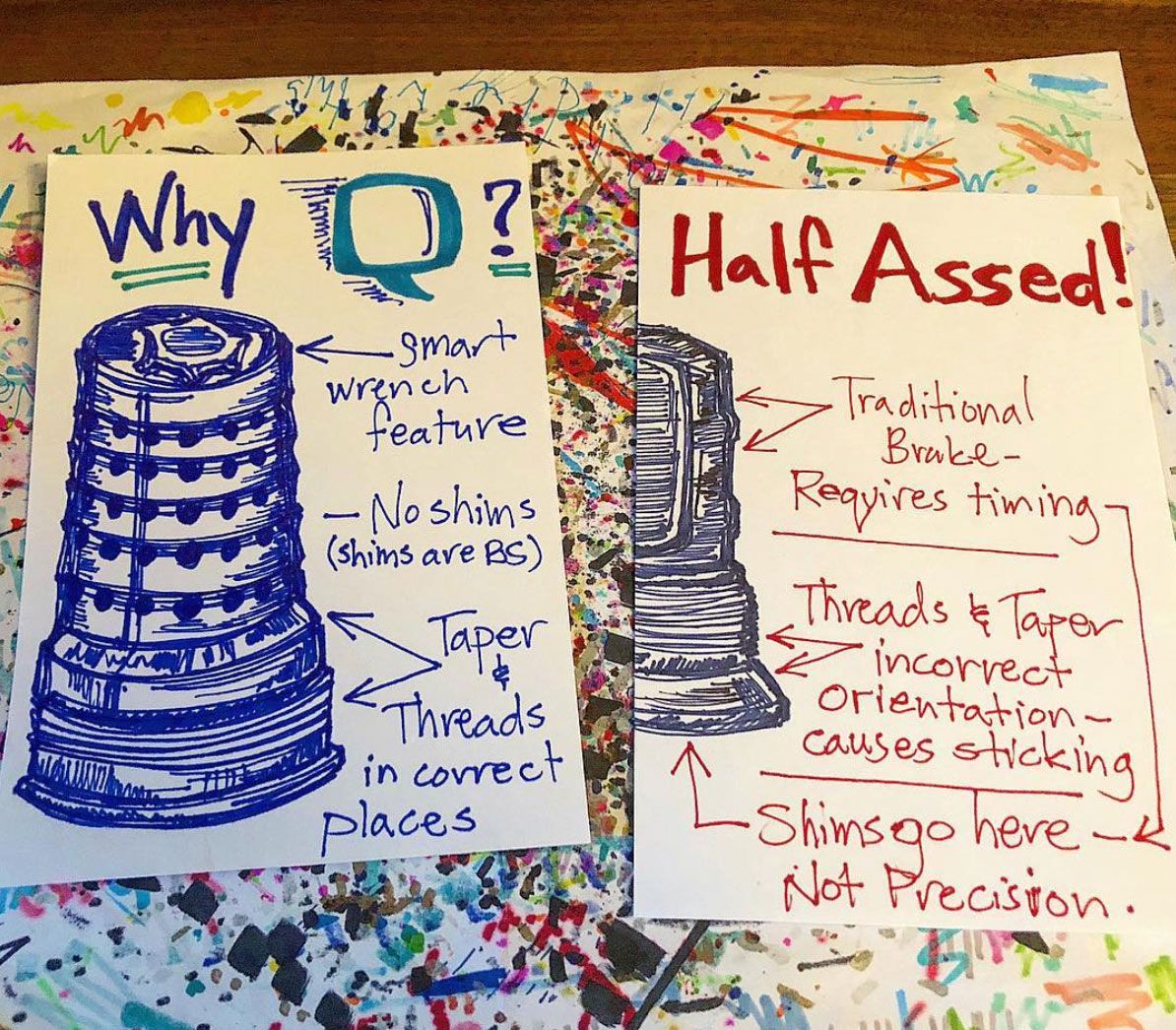
Kevin Brittingham on a More Practical QD Muzzle Device
Now, people still want to mount a silencer to a muzzle device. So we designed the Cherry Bomb muzzle break by Q, and it’s the most practical mounting solution for silencers. It weighs 25 percent less than an A2 flash hider.
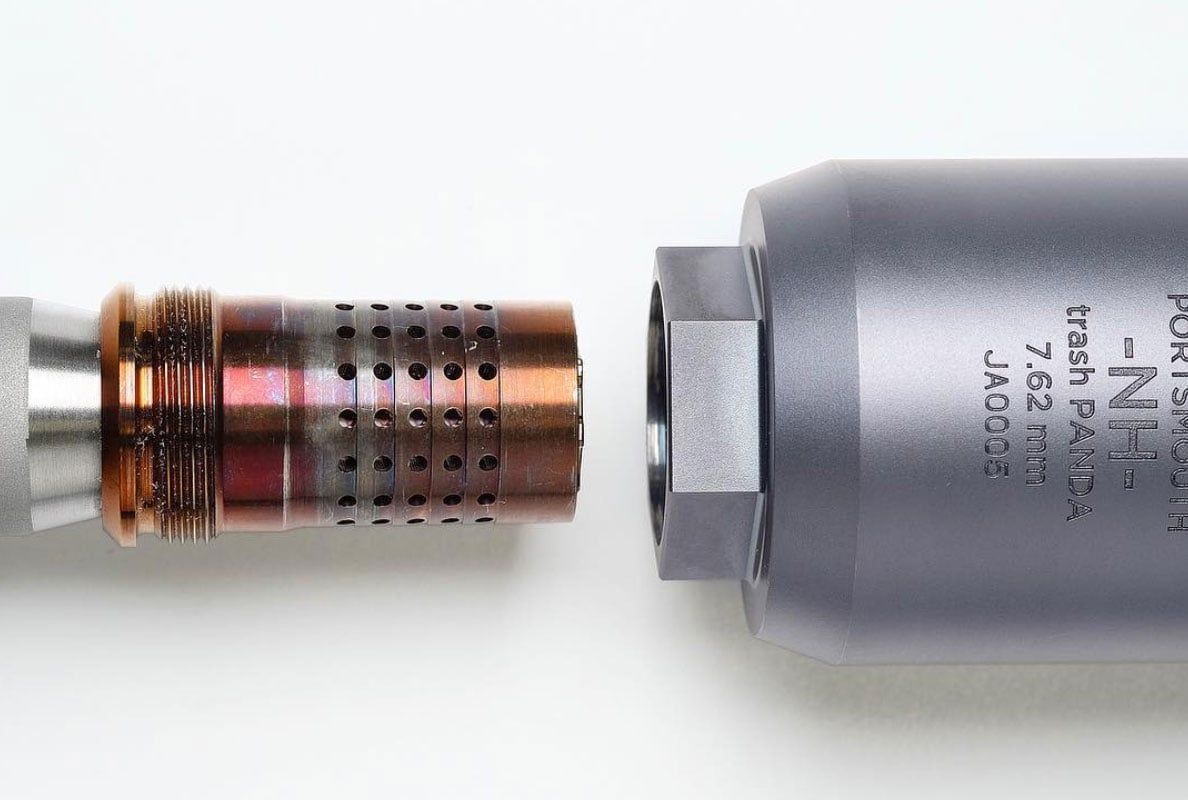
Our cans are titanium, so the muzzle brake is 17-4 Stainless steel and that’s your sacrificial blast baffle. And we’re able, in a full sized silencer, to have an unbelievably lightweight product at large diameters with large volumes.
For instance, if you take our Thunder Chicken and you compare to another competing silencer, ours will have 50 percent more internal volume for the same length silencer. What that means to you is you get lower pressures, lower temperatures, more sound reduction, less back pressure…so less gas in your face and sound at your ear. It’s just a better design.
When you’re reactionary, it’s very easy to do the right thing. But I
Kevin Brittinghamwant to be ahead of the curve. I don’t want you to tell me what we should build for you. I want to build something you’re not even thinking about and then you’ve gotta have it.
Q: You’re one of the industries’ greatest trendsetters. The mini-Fix project…it’s striking. It’s quite wild and looks like an insane amount of fun. It reminds me of a next level AAC Handi-Rifle. Can you talk about how that is progressing?
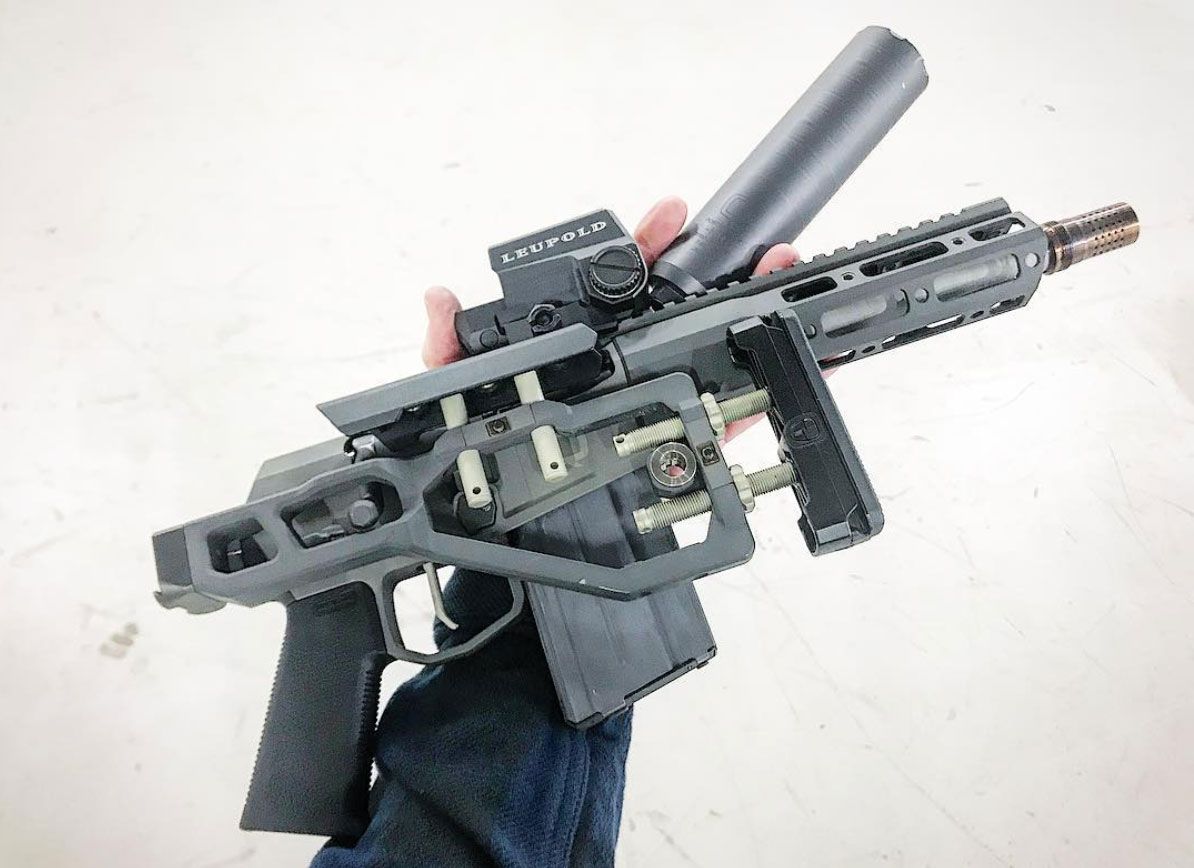
Kevin Brittingham:I feel I am better than most people at both identifying talent. I am better than most people in our industry at guessing where the market is going to go. I also make more mistakes than most people in our industry…but I think the mini-Fix is going to be huge. It could be a big flop and then you’ll get the haters and the goofy forum crowd mocking us for doing something so stupid. And that’s ok…its easy when you’re a follower not to make my mistakes. And I think we see it with Advanced Armament and some of the silencer companies and gun companies. When you’re reactionary, it’s very easy to do the right thing. But I want to be ahead of the curve. I don’t want you to tell me what we should build for you. I want to build something you’re not even thinking about and then you’ve gotta have it.
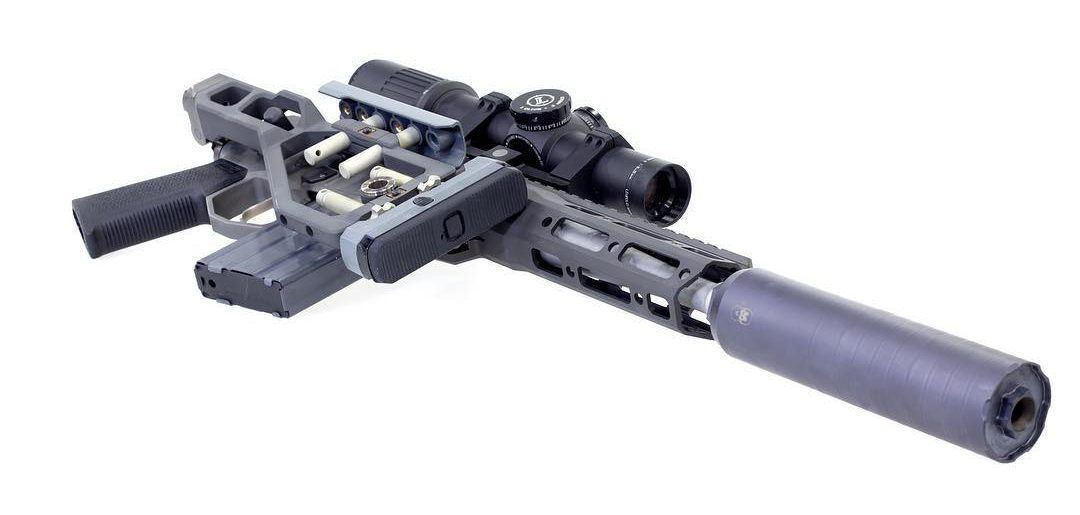
You mention the Handi-Rifle. I think when one of the engineers originally brought out the Handi-Rifle at AAC, I mocked them. And then we built one. You couldn’t explain just why in the world you would want it, but once you have one in-hand and you shoot it…you would never get rid of it, it’s so practical.
Doing those Handi-rifles…that was like stepping on the stairs in the shallow end of the pool. The mini-Fix is doing a double backflip off the diving board into the deep end. It is next-level stuff. It’s taken a commitment and we’ll see how it goes. I have a lot of confidence in it. Everyone at the office and every one who has shot it is dying for the gun.
Kevin Brittingham on Rewarding Innovation
It’s like the Fix rifle. I can talk about features all day, but its like…what sells silencers? Have your buddy shoot it. He’ll buy one. What sells the Honey Badger and the Fix? It’s putting it in someone’s hands and letting them feel the gun. It’s going to be the same with mini-Fix.
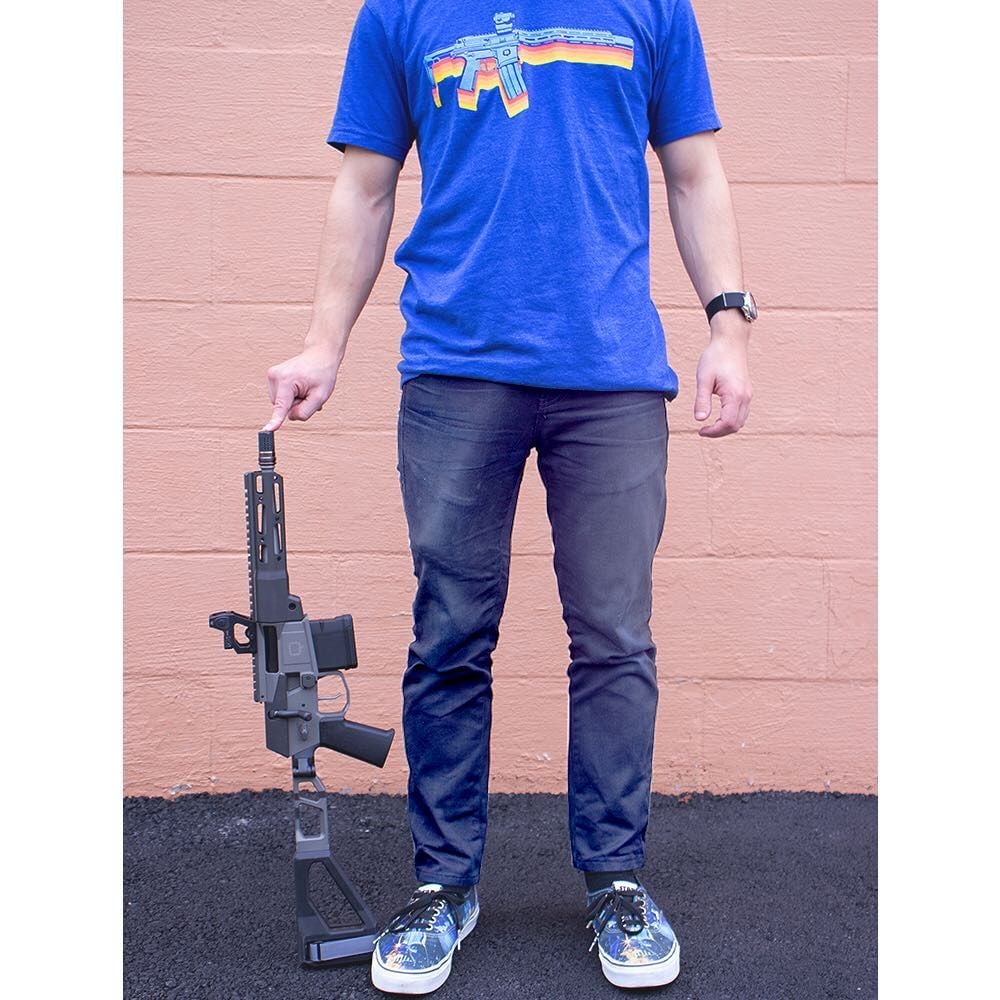
You might think “a pistol-braced, 300 Blackout, 8” barrel bolt action is stupid.” I understand your argument. But wait until you handle and shoot the gun, and let’s see how people feel. At the end of the day, customers decide if innovation is rewarded. They decide what is actual innovation and what’s not. So we’ll see. I think we’re going to see a lot of success with it.
If I wanted money, I’d just do silencers and basic ARs and paint them like a Honey Badger and whore them out. That’s just not our DNA.
Kevin Brittingham
Q: How do you measure success?
Kevin Brittingham: We have customer build day every Friday at Q. We have a seven-month backlog currently on any of our firearms. You can skip that backlog by coming to Q, making an appointment and building your own gun. You get that gun immediately. You have a great day and experience. We have people fly in every Friday from all across the country to do that. That tells me I’m being successful by the measures we’ve set for ourselves. That’s what’s important to me.
In the meantime, we’re going to continue to do products that nobody else in the industry is doing. That’s because we’re product people and we’re innovators and it’s what we want to do. I’m certainly not doing it for money. If I wanted money, I’d just do silencers and basic ARs and paint them like a Honey Badger and whore them out. That’s just not our DNA.
Q: I’m in contact with a few professional wildlife eradicators. These guys are sent all of the latest and greatest to beta test, but I see them using your products by choice. I have a close family member who is a professional eradicator…he now uses a Fix he paid for exclusively.
Kevin Brittingham: There’s three things in my life. I’ve raised 3 kids. I love our company…and I love hunting. I kill stuff every
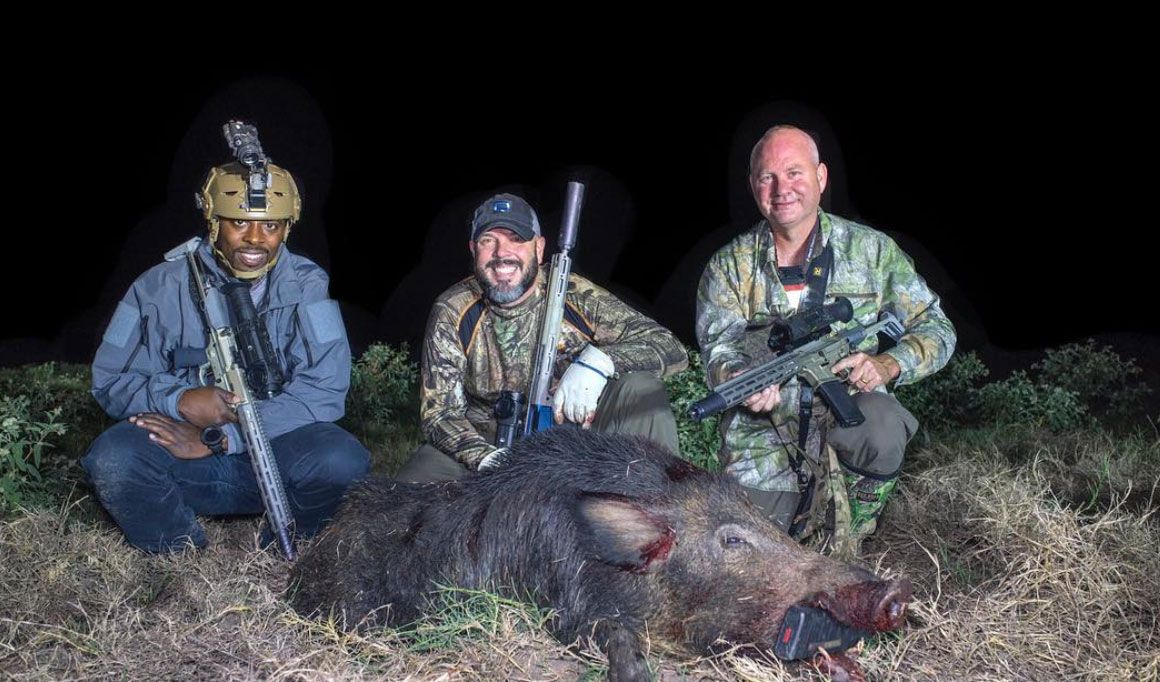
I think our products are an incredible value. It costs me, I don’t even know if I know at this point…but I would say probably 6 to 7 million dollars bringing the Fix rifle to market. That’s not venture capitol money. That’s my money. I believe in it. The gun is next-level. I could sell every one of the first 3 or 4 thousand for six grand a piece, but we’re not. I want them to be for every one.
Todd Huey is a killer. He’ll be the first guy to get the 8.6 because he’s going to out and kill stuff with it and give us feedback. The cartridge isn’t for show. I’ve turned down royalties on the cartridge from the biggest ammo company because I want the price of the ammo to be as low as possible for the consumer. I want it to be successful. I want these things to be widespread.
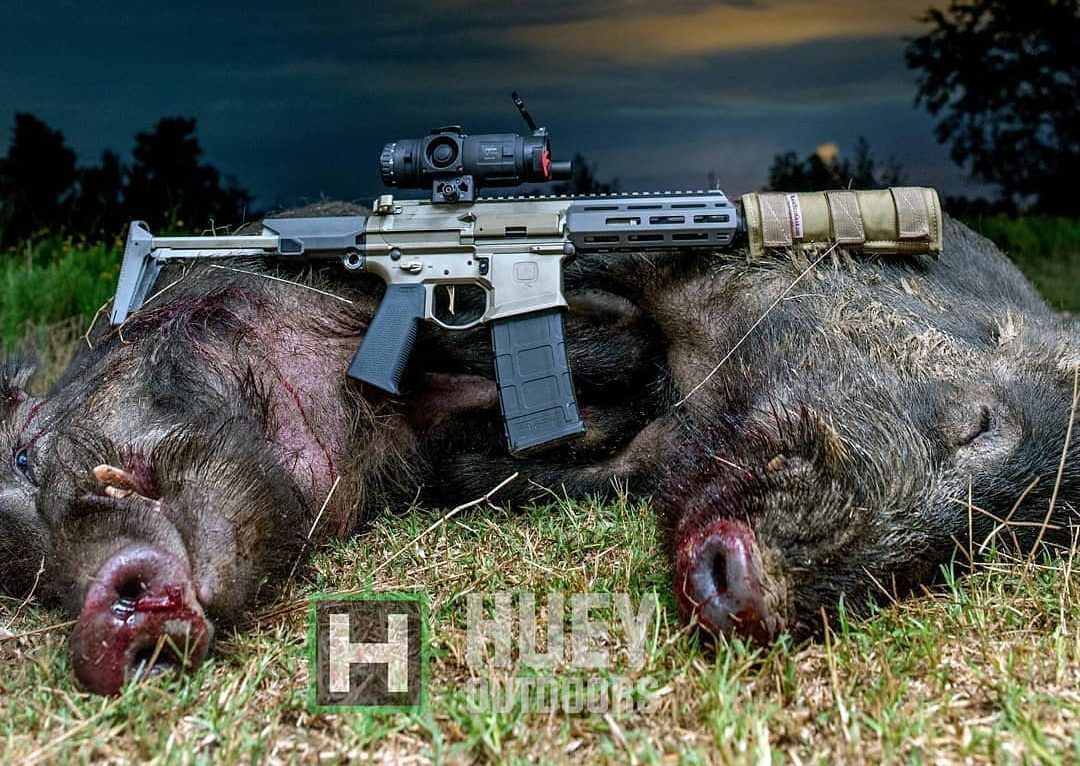
Open Source
We’re going to open-source all of that stuff, just like we do with a lot of our innovations. I want to see a Ruger All-American in 8.6 Creedmoor with a pistol brace on it so the guy who can’t afford a 3,000 dollar gun right now can still have the experience and have the cartridge and be able to go out and shoot deer with it.
Kevin Brittingham on Value and Practicality
We’re never going to produce cheap stuff, but our stuff will always be the best value, whether it’s a silencer or a gun. I’ve learned lessons from the past. I’ve learned from my mistakes with Advanced Armament, with Remington and with Sig and I think you see the results now.
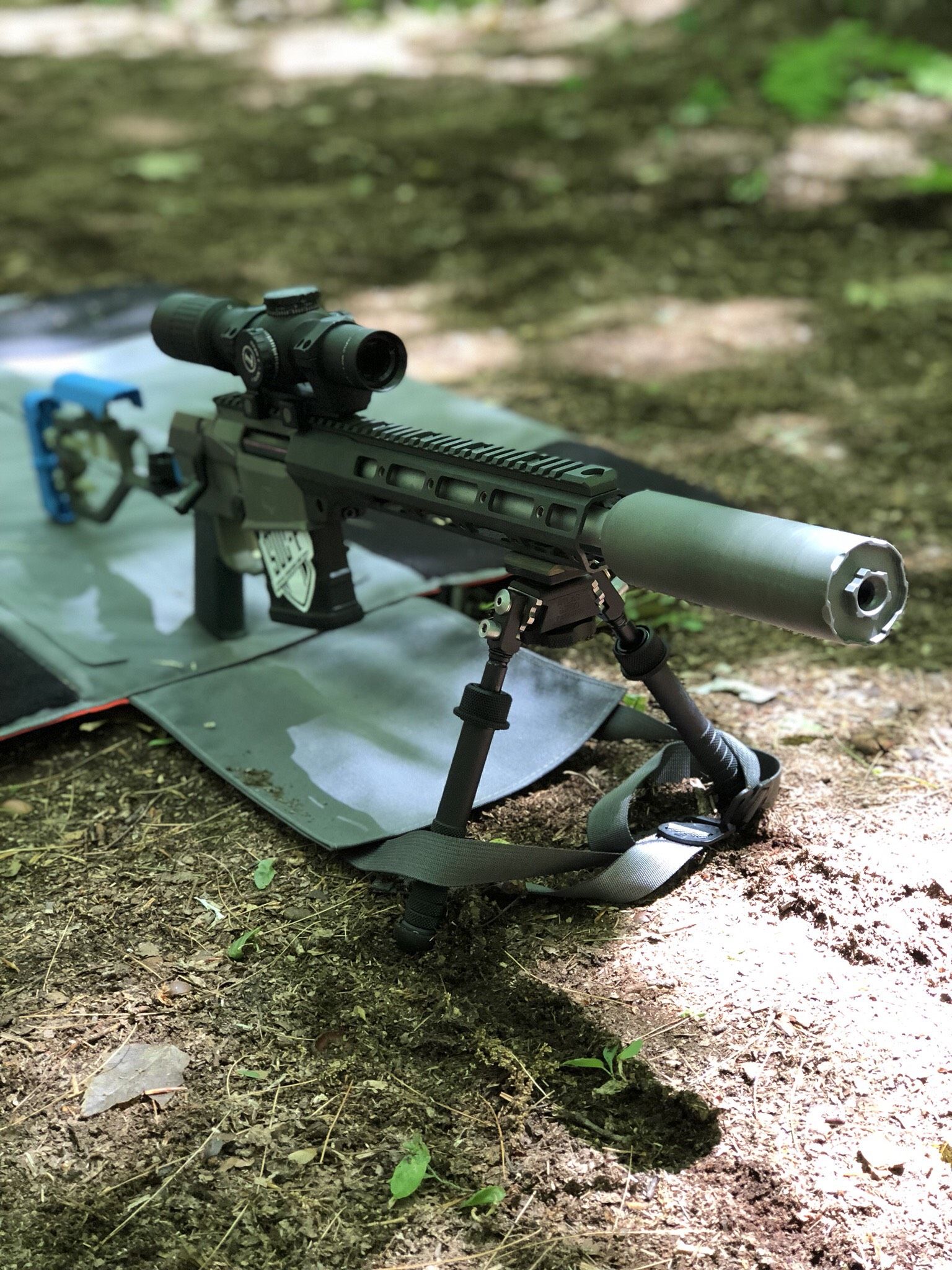
I would pay 10,000 dollars for a fix. I would pay the same for a Honey Badger. They’re that much better for the uses that I have, whether its riding around my farm in my truck looking to cull deer, in Africa hunting big game or in New Zealand hunting stag. I spend tens of thousands of dollars on these trips. I would spend it on the rifle… but I don’t have to. The Fix is the best thing going. So is the Honey Badger in its category. And that’s who we are.
Q: Final question…advice for someone looking to buy or build an AR-15?
Kevin Brittingham: At this point in my life, I want to have fewer guns and better guns, so I try not to cut a lot of corners. To me there’s some basic things. Get a good trigger. I’d sacrifice a lot of other things before that. Build light weight. There’s very few reasons that you need to have a heavy gun, and you’ll find that you shoot them more. If you have a good trigger, and good optic and its lightweight you’re going to use it more.
###
Thanks to Kevin for taking the time to speak with us. For more information on Q, visit them on Instagram, Facebook or on their website, liveqordie.com.

2 - 2Shares

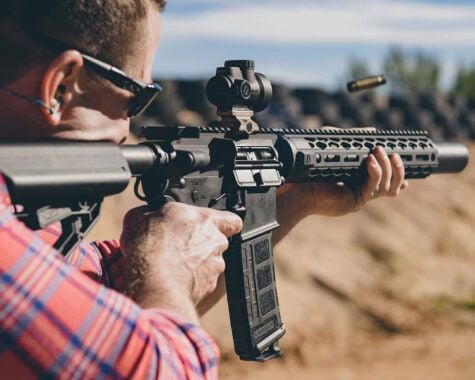



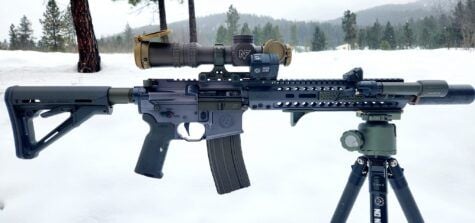
So not ONE article anywhere after december on the 8.6 creedmoor.
Why?
I’ve noticed that too…I am hoping to do a brief follow up on this article in the weeks ahead about the Sugar Weasel and the state of 8.6. I’ve always expected SHOT 2020 to be it’s official roll-out.
they don’t even mention 8.6 on their webpage.
Lets hope it wasn’t just a fluke
not a fluke, but we’re doing a follow up very, very soon.